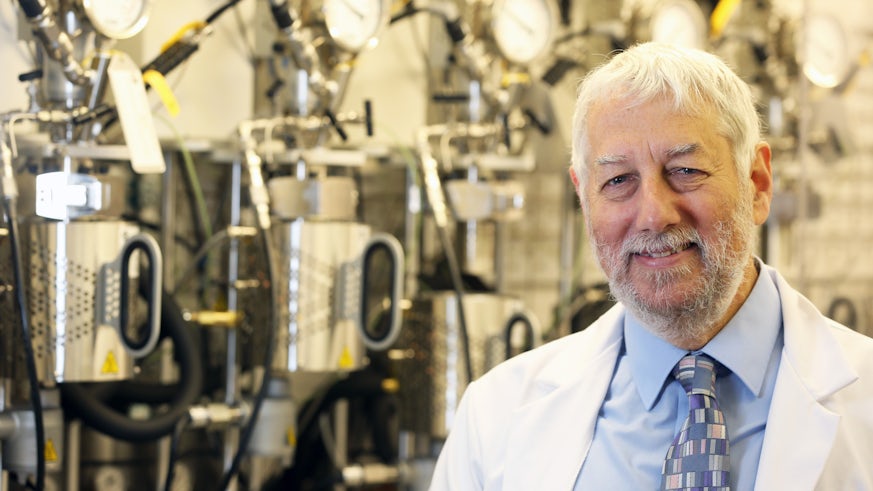Gold catalysts made simple with new technique
16 April 2020

Scientists from Cardiff University have created a new and simple method for creating catalysts made from precious metals and have shown that gold still remains the most stable and efficient of them all.
Catalysis is the process of speeding up chemical reactions to make products cheaper, cleaner, safer and more sustainable. It is estimated that 85 per cent of the world’s products require a catalyst at some stage in their production.
Though gold has been known to be a relatively inert material, work pioneered by Professor Graham Hutchings from the Cardiff Catalysis Institute has shown that it is in fact a highly efficient catalyst in specific reactions.
One such reaction is the production of vinyl chloride monomer (VCM) – the main ingredient of PVC.
As a result of this pioneering work, the gold catalyst has now been commercialised by leading chemicals company Johnson Matthey and is currently in production at a purpose-built reactor in Shanghai, China.
Current estimates suggest that 20 million tonnes of vinyl chloride could be manufactured each year using the gold catalyst.
More importantly, the gold catalyst has replaced a toxic mercury catalyst that was previously used for this reaction, which is not only extremely harmful to the environment but also listed as a threat to human health by the World Health Organisation.
The WHO’s recently ratified Minamata convention states that all new VCM plants must use mercury-free catalysts and in the near future all existing industrial plants must switch to mercury-free alternatives.
In a new study, published today in Nature Chemistry, the team have developed a simple new method for creating the gold catalyst using acetone as a solvent as one of the key ingredients.
The method led to the creation of monodispersed gold cations on the catalyst and so the gold is present as just a single site. Using advanced characterisation techniques, in partnership with Professor Kiely at Lehigh University in the USA, these gold single site cations are shown to be the active species and also are very stable under the reaction conditions
Moreover, the new method could be used to produce catalysts made from other precious metals, including platinum, palladium and ruthenium, all of which have also shown promise in the production of VCM and also are prepared as single site catalysts.
However, on comparison with gold for this particular reaction, the results showed that gold remained the most stable and active catalyst.
Commenting on the findings, Professor Graham Hutchings said: “Creating single site catalysts has long been a complicated task; however, we’ve put forward a much simpler method that creates these single sites and can be used to create a whole host of other catalysts.
“We hope that this work can push forward our pioneering work in the development of catalysts for VCM production and thus eradicate the use of mercury that poses a serious threat to both the environment and human health.”
Share this story
The School tackles the important scientific challenges of the 21st century which is the focus of its internationally leading research and education.




